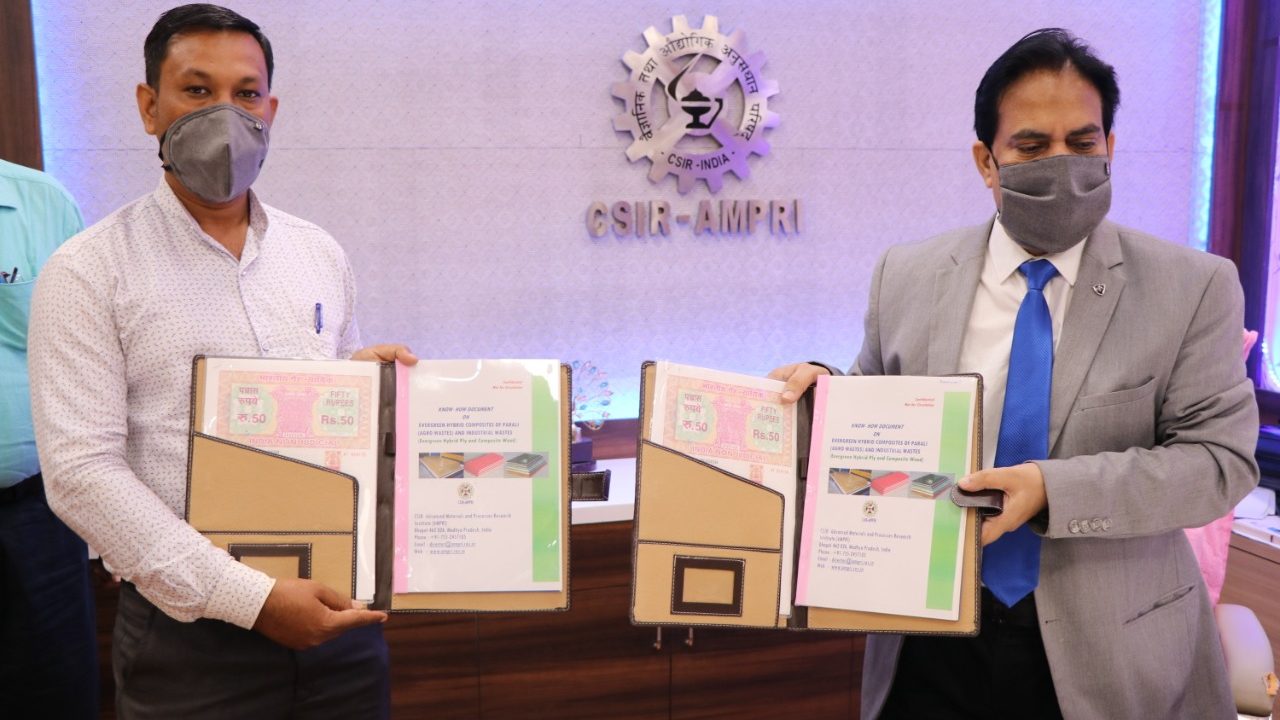
Wood Substitute from Argo-Industrial Waste
- News
- 1.4K
India, the second-largest agro-based economy with year-round crop cultivation, generates a large volume of agricultural waste; including crop residues. Crop-residue has emerged as a threat to the environment. The burning of crop residue in Punjab and Haryana is responsible for severe air pollution during winter in Delhi and Northern India. Various ways have been thought of and used to tackle the agro-waste in an eco-friendly manner.
The Council of Scientific and Industrial Research-Advanced Materials and Processes Research Institute (CSIR-AMPRI), Bhopal researched to find a productive way to manage the agro-industrial waste. The findings of the research paved the way to introduce new materials for the development of a wood substitute for building applications so that the consumption of timber in building and house construction can be minimized. This technology also offers a potential solution for the effective utilization of different agro-industrial wastes such as paddy straw, wheat straw, marble wastes, red mud, fly ash, and other minerals, metallurgical wastes.
For making evergreen hybrid ply and composite wood, agro wastes primarily paddy straw/ stubble and wheat straw, and industrial wastes, mainly marble wastes, fly ash from Thermal power plants, red mud from Aluminium industries were used as a primary raw material with natural fibres in the polymeric system (Polyester / epoxy resin).
The performance of evergreen hybrid ply and composite wood would vary depending on the raw materials quantity, quality, particulate- fibre ratio, particulate/fibres – binder ratio, type of polymeric system, and processing and manufacturing conditions. It can be made in a single-stage fabrication process as solid material as well as a two-stage process as a sandwich composite of required performance. The demonstrated results revealed that high quality and glossy finish composites under single stage operating condition can be achieved using about 60% agro-industrial wastes.
The innovative composite materials have a variety of application potential for infrastructure in the construction sector, locomotive (train), and other transport systems (bus, ship, etc.) and infrastructure as doors, false ceilings, flooring, architectural wall panels, partition, and furniture, etc. The evergreen hybrid ply and composite wood are stronger and environmental-friendly.
“It is resistant to weather, corrosion, water, moisture, and is a termite and fungus free composite. The composite materials are fire retardant, self- extinguishing in nature, cost-effective, and maintenance-free materials. Evergreen Hybrid Ply and Composite Wood has the potential to be used as an alternate material for wood/timber, plastic, synthetic wood such as MDF board, particleboard and plywood, and all other conventional materials used in the furniture industry. Addition of agro-industrial wastes particulates and fibres enhance the surface finish, density, flexural modulus, and resistance to abrasion” says the statement issued by the institution. Recently the technology transfer has been done by AMPRI to M/s. Shubh Green Sheet Pvt Ltd, Bhilai. (ISW)
If you liked this article, then please subscribe to our YouTube Channel for the latest Science & Tech news. You can also find us on Twitter & Facebook


